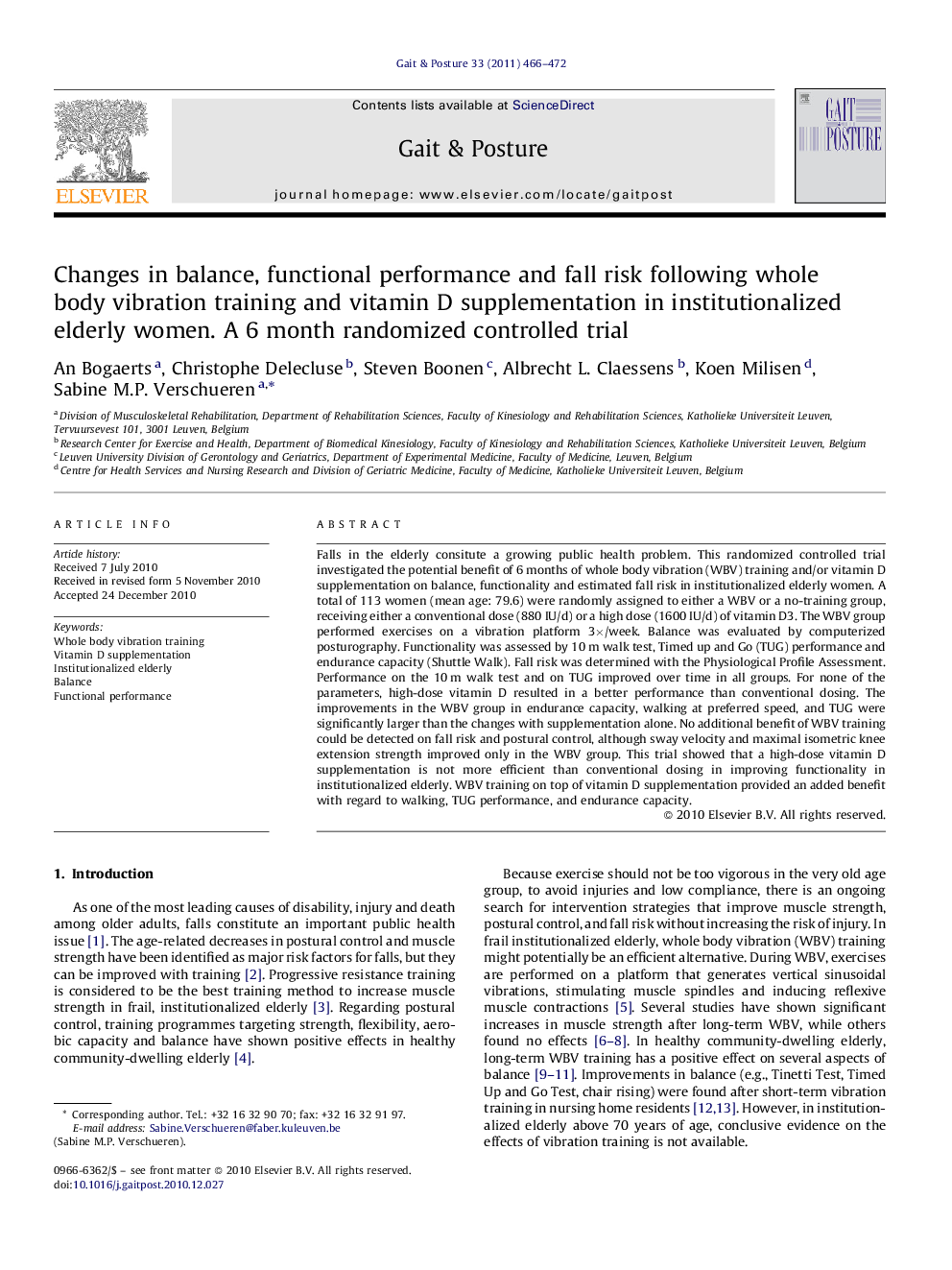| Article ID | Journal | Published Year | Pages | File Type |
|---|---|---|---|---|
| 4056557 | Gait & Posture | 2011 | 7 Pages |
Falls in the elderly consitute a growing public health problem. This randomized controlled trial investigated the potential benefit of 6 months of whole body vibration (WBV) training and/or vitamin D supplementation on balance, functionality and estimated fall risk in institutionalized elderly women. A total of 113 women (mean age: 79.6) were randomly assigned to either a WBV or a no-training group, receiving either a conventional dose (880 IU/d) or a high dose (1600 IU/d) of vitamin D3. The WBV group performed exercises on a vibration platform 3×/week. Balance was evaluated by computerized posturography. Functionality was assessed by 10 m walk test, Timed up and Go (TUG) performance and endurance capacity (Shuttle Walk). Fall risk was determined with the Physiological Profile Assessment. Performance on the 10 m walk test and on TUG improved over time in all groups. For none of the parameters, high-dose vitamin D resulted in a better performance than conventional dosing. The improvements in the WBV group in endurance capacity, walking at preferred speed, and TUG were significantly larger than the changes with supplementation alone. No additional benefit of WBV training could be detected on fall risk and postural control, although sway velocity and maximal isometric knee extension strength improved only in the WBV group. This trial showed that a high-dose vitamin D supplementation is not more efficient than conventional dosing in improving functionality in institutionalized elderly. WBV training on top of vitamin D supplementation provided an added benefit with regard to walking, TUG performance, and endurance capacity.
